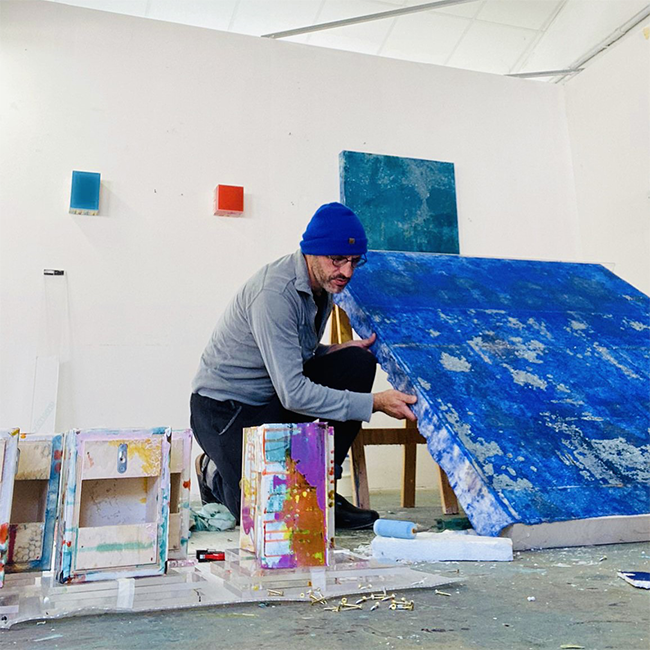Ivan De Menis
Ivan De Menis was born in Treviso in 1973 and studied painting at the Accademia di Belle Arti in Venice. De Menis generously covers his work surfaces with paint, working in thick layers, allowing the highly pigmented acrylic paint to run down the sides. With his works, he produces small-format, rectangular or square picture objects that develop an intense colour and luminosity and give an idea of the artist's working process, as the various layers appear visible at the sides. The appeal of his work is shown in the contrast of an almost silky-smooth surface and the rough sides, marked by colour streaks and drops and peeled layers of paint. His works can be found in numerous private and public collections at home and abroad.
The wooden panels by Ivan De Menis are only apparently simple; actually, they encapsulate complex systems and thoughts. In his more recent works, for which he uses polystyrene and airball, it is a process that reveals the most intimate part of the work, as if he wanted to pull the viewer into the beating heart of what is happening before his eyes. The materials are usually used for packaging but here they become protagonists. Content and container are identified.

Ivan De Menis was born in Treviso in 1973 and studied painting at the Accademia di Belle Arti in Venice. De Menis generously covers his work surfaces with paint, working in thick layers, allowing the highly pigmented acrylic paint to run down the sides. With his works, he produces small-format, rectangular or square picture objects that develop an intense colour and luminosity and give an idea of the artist's working process, as the various layers appear visible at the sides. The appeal of his work is shown in the contrast of an almost silky-smooth surface and the rough sides, marked by colour streaks and drops and peeled layers of paint. His works can be found in numerous private and public collections at home and abroad.
The wooden panels by Ivan De Menis are only apparently simple; actually, they encapsulate complex systems and thoughts. In his more recent works, for which he uses polystyrene and airball, it is a process that reveals the most intimate part of the work, as if he wanted to pull the viewer into the beating heart of what is happening before his eyes. The materials are usually used for packaging but here they become protagonists. Content and container are identified.
